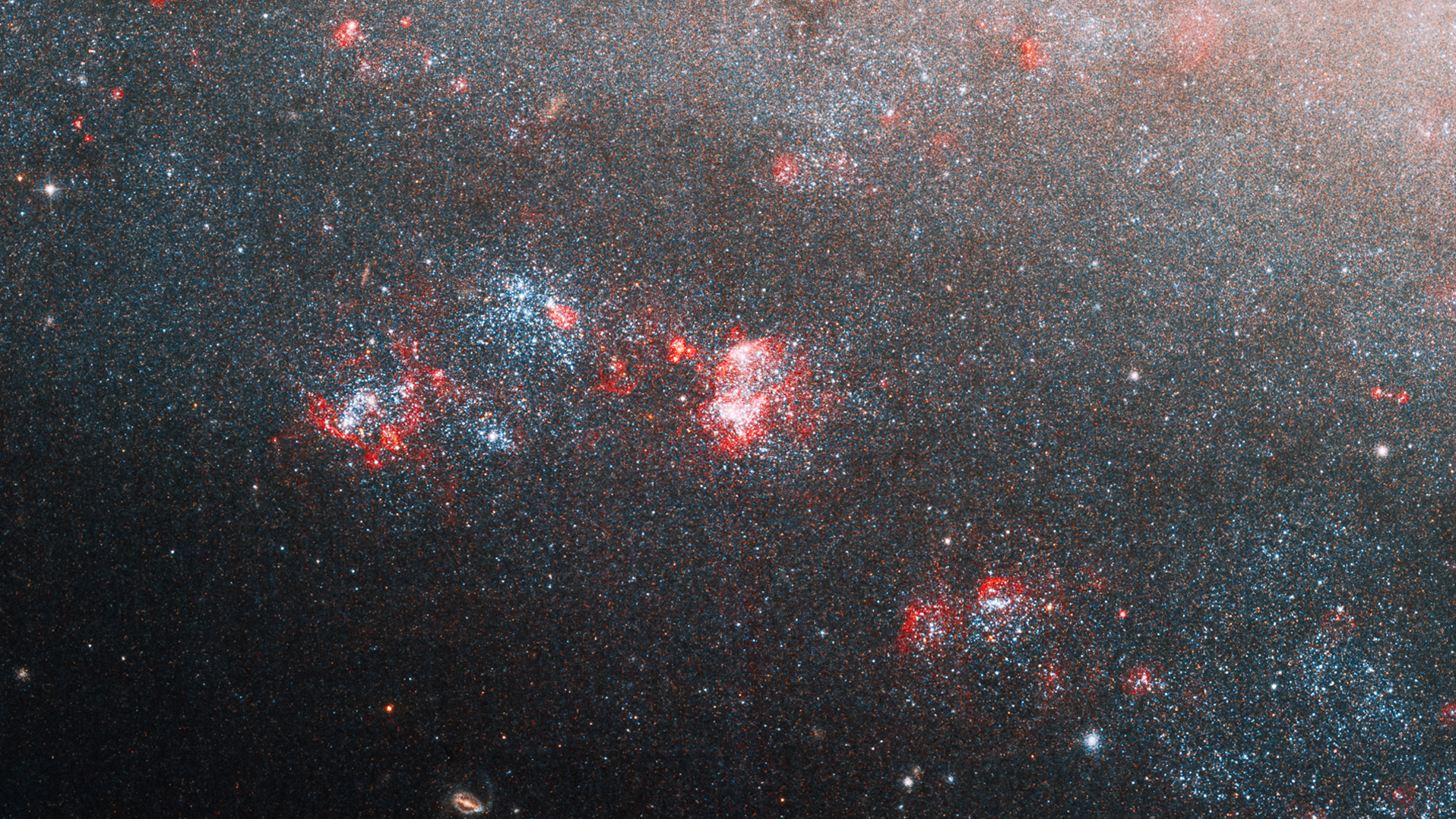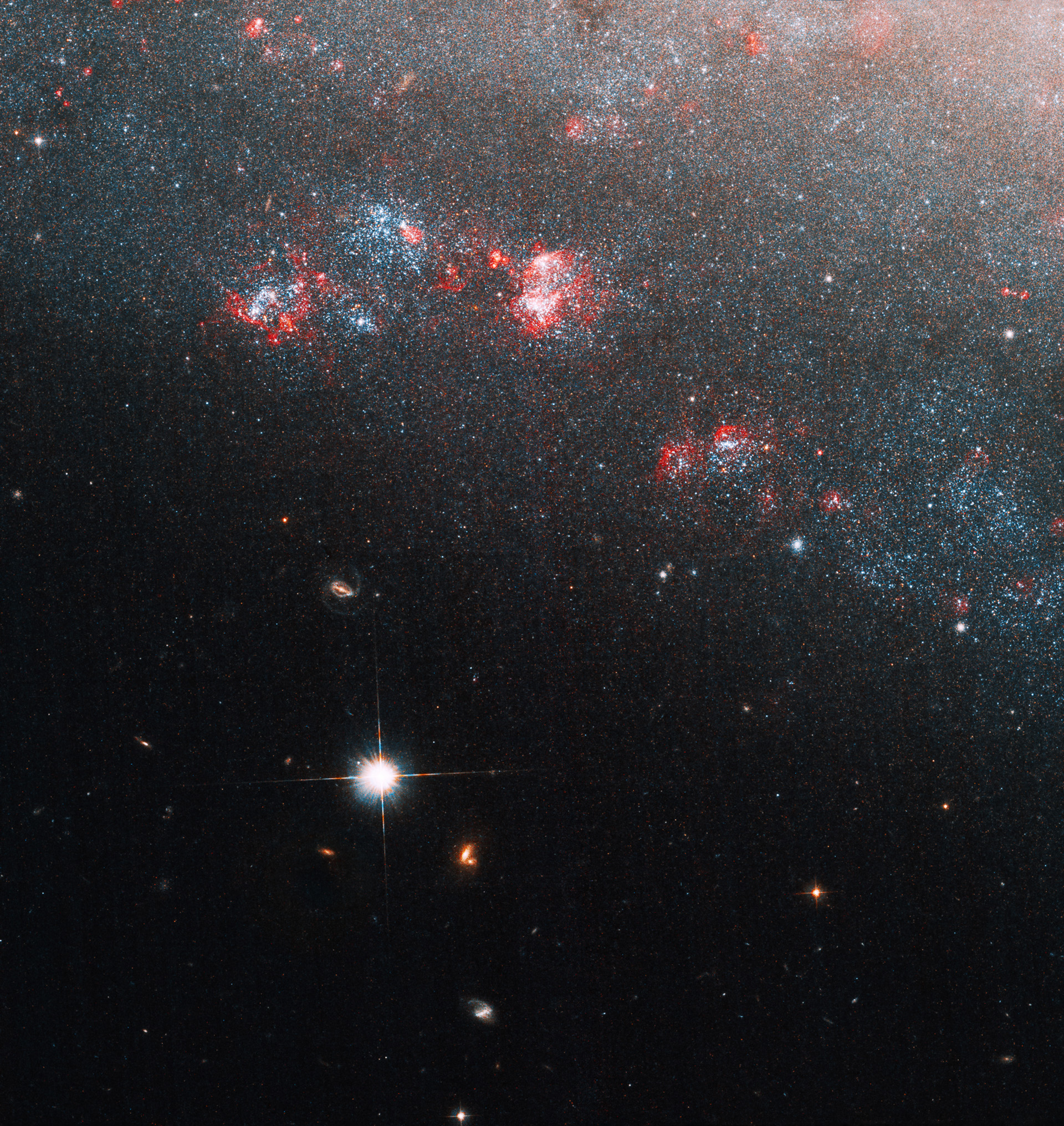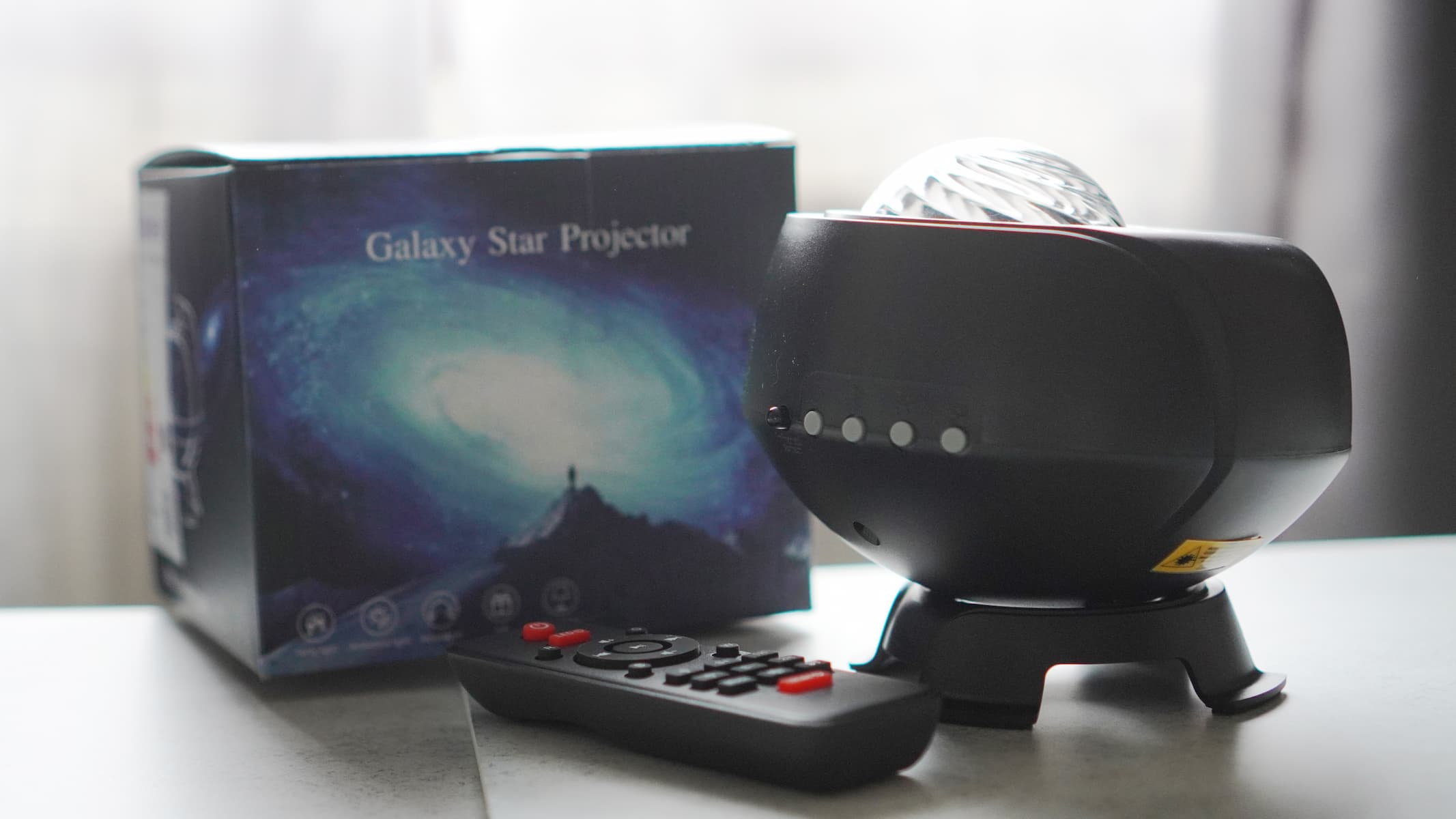Hubble telescope looks deep into the Needle's Eye in this dwarf spiral galaxy photo
There's a mysterious X-ray source and other unknowns in this Hubble telescope photo of the Needle's Eye galaxy.

A fresh image from the Hubble Space Telescope shows a deep view of the eye of a galactic needle.
The spiral galaxy is nicknamed the "Needle's Eye", although more officially it is known as NGC 247 and Caldwell 62. NASA said May 10 the nickname is appropriate given this galaxy is a dwarf spiral, making it a relatively small group of stars compared to our own Milky Way.
The Hubble Space Telescope image portrays a hole on the other side of the galaxy, which NASA said puzzles astronomers. "There is a shortage of gas in that part of the galaxy, which means there isn’t much material from which new stars can form," the agency wrote.
Related: The best Hubble Space Telescope images of all time!

"Since star formation has halted in this area, old, faint stars populate the void. Scientists still don’t know how this strange feature formed, but studies hint toward past gravitational interactions with another galaxy," the agency added.
The hole is not the only mystery this galaxy holds.
Below the disk of the galaxy, you can spit a few more smaller and distant galaxies beyond the Needle's Eye marker of 11 million light-years, a relatively close distance to us in galactic terms. But learning about those faraway galaxies is something astronomers are also trying to do.
Get the Space.com Newsletter
Breaking space news, the latest updates on rocket launches, skywatching events and more!
"Bright red indicates areas of high-density gas and dust, and robust star formation rather close to the edge of the galaxy," NASA said. There's also a bright foreground star that happens to be in the field of view.
Embedded in the heart of the galaxy is an ultraluminous X-ray source, too, but it is unclear where that came from.
"Are they stellar-mass black holes gorging on unusually large amounts of gas? Or are they long-sought 'intermediate-mass' black holes, dozens of times more massive than their stellar counterparts but smaller than the monster black holes in the centers of most galaxies?" NASA asked.
Independent studies of the galaxy using other forms of light, such as X-rays with NASA's Chandra X-ray Observatory, suggest the X-rays are coming from an intermediate-mass black hole's disk. But more studies will be required to decide for sure what is going on.
Follow Elizabeth Howell on Twitter @howellspace. Follow us on Twitter @Spacedotcom or Facebook.
Join our Space Forums to keep talking space on the latest missions, night sky and more! And if you have a news tip, correction or comment, let us know at: community@space.com.

Elizabeth Howell (she/her), Ph.D., was a staff writer in the spaceflight channel between 2022 and 2024 specializing in Canadian space news. She was contributing writer for Space.com for 10 years from 2012 to 2024. Elizabeth's reporting includes multiple exclusives with the White House, leading world coverage about a lost-and-found space tomato on the International Space Station, witnessing five human spaceflight launches on two continents, flying parabolic, working inside a spacesuit, and participating in a simulated Mars mission. Her latest book, "Why Am I Taller?" (ECW Press, 2022) is co-written with astronaut Dave Williams.
